
With the average life expectancy in developed countries of 79 years for males and 82 years for females,6 the fact that presbyopia usually manifests at just over 40 years of age means that patients are living around half their life with the condition. The reality is that presbyopes form a large and diverse patient group, with many in full time employment, likely to be fitter, healthier and more active, with greater disposable income than any similar generation before (figure 1).
Carefully evaluating presbyopic patients is important and enables their lifestyles and visual demands to be better understood. In doing so, the role of the eye care professional (ECP) becomes clearer, with a need to ensure those visual needs are fully met throughout the years they are presbyopic. For many, the option of multifocal soft contact lenses (MF SCLs) may deliver the flexibility they seek in their vision correction. This article explores the opportunities that exist with today’s presbyopes, reviews the challenges of achieving success with MF SCLs and introduces how Acuvue Oasys Multifocal with Pupil Optimised Design can deliver the success ECPs seek for their presbyopic patients.
A sizeable opportunity
Today’s presbyopes
These patients are more affluent1 and active than previous generations, have significant disposable income1 and are regular users of digital devices.2 More than two in three presbyopes not only value looking younger,7 but are also willing to spend money on products and procedures like teeth whitening, hair colouring and cosmetic surgery to maintain a youthful appearance.8
This paints a picture of a pool of presbyopes who are broadly active and motivated to continue looking and feeling as young as possible. These patients are typically within the practice already and this is where the opportunity lies to address their needs and find success with a growing MF SCL business.
There are two clear opportunities (figure 2). The first is to ensure current CL wearers are supported to find the right lens to allow them to continue in lenses once they become presbyopic. The second is to proactively recommended CLs for the first time to presbyopic spectacle wearers. There is a third opportunity, which is to offer MF SCLs to those patients who have worn spectacles for some time.
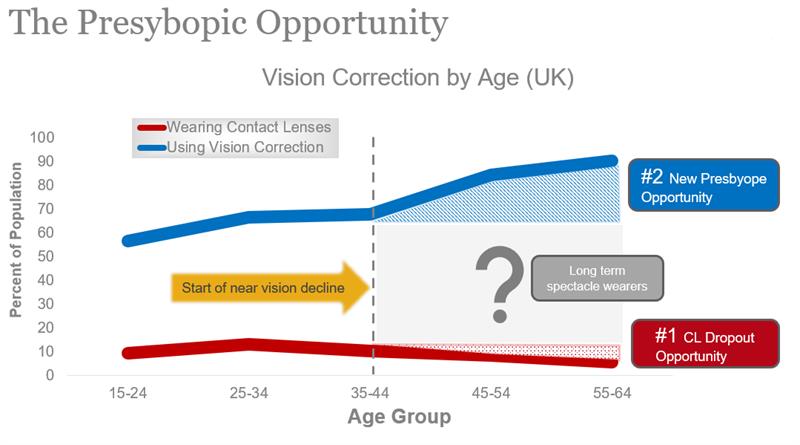 Figure 2
Figure 2
Opportunity #1: current presbyopic CL wearers
Data from the US and UK show on average four in 10 contact lens wearing patients in the typical practice are over 40 years old.3,4,§ It makes sense to focus on the patients in this group first who are not already wearing a MF SCL. Patient motivation plays an important part to the success of any fit. The good news is that this group appears to be motivated, with more than nine in 10 current CL wearers, aged 40 to 64 years of age, saying they expect to stay in lenses.3 However, the thing to watch out for, should their vision and comfort needs be inadequately addressed, is that, without intervention, a staggering half of lens wearers currently cease lens wear once they become presbyopic.4 So why not make your first priority keeping these patients who have had time and effort invested in them wearing CLs?
Opportunity #2: new spectacle wearing presbyopes
Tackling that second opportunity of spectacle wearers makes sense too. Many of this group will be adapting to having to rely on bifocal, varifocals or reading glasses for the first time and may find them limiting for some activities, inconvenient and ageing. These areas provide many opportunities for the ECP to suggest trying MF SCLs as an alternative, allowing them to experience the freedom that MF SCLs may bring to their lives.
Overall, the rewards to the practice for fitting presbyopes with CLs are several fold. A survey of 233 presbyopic contact lens wearers§ and 584 non-presbyopic contact lens wearers found that the presbyopic group were less likely to purchase contact lenses online than non-presbyopes and more likely to purchase lenses where they received their eye exams.3
The challenges
While the opportunities are self-evident, successful fitting of MF SCLs is not without its challenges. There are some key factors related to the physiology and optics of the eye that can significantly impact product performance and patient satisfaction. In addition to appropriate patient selection and expectation setting, there are a couple of fundamental areas that may often be
overlooked.
Ocular surface and tear film
With increasing age come changes to the tear film. Its stability tends to reduce with age, with a significant reduction in tear break up time of about 50%.9 Tear film volumes can also reduce.9 Given these changes to tear film quality and quantity, it is not surprising that dryness symptoms among contact lens wearing presbyopes are more common,10 as is the incidence of dry eye disease with this age group in general.11 The result for patients when trying to wear contact lenses is two-fold, both a reduction in comfort and visual quality can occur.
The good news is that with appropriate management it is possible to improve the signs and symptoms related to poor quality tear film and ocular surface in many patients. The initial step is to carefully assess all these aspects ahead of fitting presbyopes and to repeat those checks at subsequent follow ups. Think of performing a dry eye investigation, assessing symptoms with and without lens wear. Use of a validated questionnaire can be beneficial to help quantify and follow up the patient over time.12,13 Tear film quality, ideally measured as non-invasive tear film break up time, and tear film quantity via an estimate of tear meniscus height are important to record. Reduced quantity suggests an aqueous deficiency, with evaporative problems being defined through assessment of meibum quality and meibomian gland expressibility.12 Increasing evidence is becoming available for the improvement of signs and symptoms that occur in contact lens wearers when tear film deficiencies are managed via use of proprietary warm compresses,14 microblepharon exfoliation of lid margins,15,16 lipid-containing artificial tears17 and in-office thermal pulsation.18
Pupil size optimised optics: why size matters
Aligning the optical profile of a MFSCL lens with the size of the pupil is crucial to its success.19 Accurate lens centration over the pupil is one part of this. The other is related to the pupil size itself. For example, a centre-near design whose optical profile is mismatched with a pupil that is smaller would potentially result in the wearer having an unbalanced visual experience, viewing adequately through the near and intermediate power while being exposed to little of the distance power. This may well create a suboptimal visual experience for the patient when carrying out far vision tasks such as driving.
It is well understood that pupil size tends to decrease with age,20 and this needs to be accounted for when designing the optical profile of MF SCLs. What is less intuitive is that pupil size also varies with refractive error, with myopes, in general, having larger pupils and hyperopes, even when well corrected, smaller pupils (figure 3).20 This adds a layer of complexity to optimising that MF design, which ideally should incorporate consideration of pupil size difference across age as the reading addition increases, but also across the range of prescriptions from high myopia, through to emmetropia and on to high hyperopia.
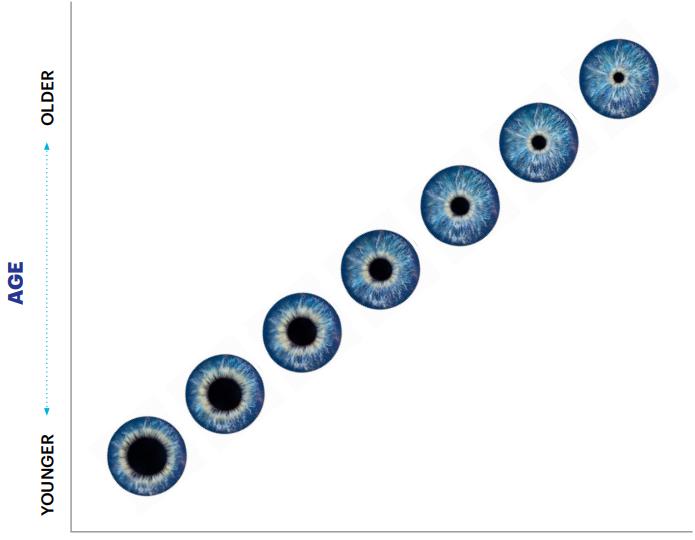 Figure 3: Diagrammatic representation of pupil size change with both age and refraction
Figure 3: Diagrammatic representation of pupil size change with both age and refraction
Of the two challenges highlighted above, the ECP can take a proactive role in the assessment and management of the ocular surface condition in their presbyopic contact lens wearers. The contact lens manufacturer can help support these efforts by addressing the needs of matching optical design to pupil size for all of the variables outlined above. Acuvue Oasys Multifocal has been created to do just this to help support ECPs and patients in achieving successful outcomes, with a straightforward, easy fitting approach. Let us examine the properties of the lens in more detail.
Introducing Acuvue Oasys Multifocal
The key features of Acuvue Oasys Multifocal can be broken down into three areas:
- Pupil Optimised Design; the right optical profile that accounts for the natural variation in pupil size due to both age and refractive error
- Hybrid Back-Curve Technology; ensuring the lens sits in the right position to align the complex optics with the pupil
- Embedded wetting agent technology – delivering unbeaten comfort‡ via the proven performance of the Acuvue Oasys material.
Pupil Optimised Design
Pupil Optimised Design is unique to Acuvue Multifocal Contact Lenses, with 1-Day Acuvue Moist Multifocal being the only other lens to incorporate it. Both the daily disposable lens and the new reusable lens are centre near designs (table 1). Importantly in both, the Pupil Optimised Design has been applied across all parameters within the range, optimising the optical design for each 0.25D prescription across the range. That means, for each of the 183 parameters, the optical design has been optimised for both the myopic or hyperopic prescription and for its reading addition.5 In comparison, rather than 100% of parameters being optimised, the leading competitor has less than 2% of the range optimised in such a way (figure 4).††
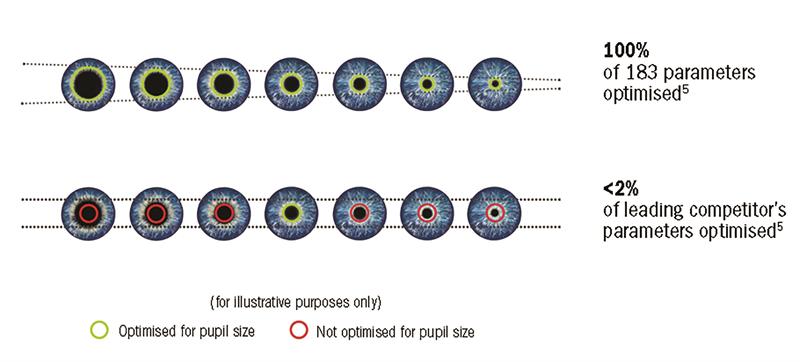 Figure 4: Pupil Optimised Design of Acuvue Oasys Multifocal compared to leading competitor’s design
Figure 4: Pupil Optimised Design of Acuvue Oasys Multifocal compared to leading competitor’s design
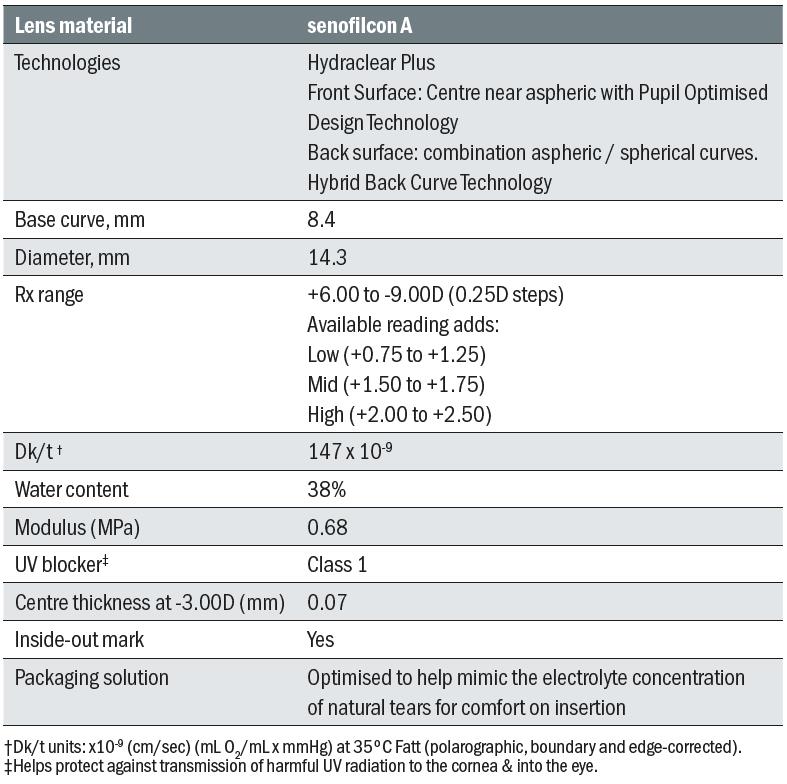 Table 1: Parameters of Acuvue Oasys Multifocal
Table 1: Parameters of Acuvue Oasys Multifocal
Hybrid Back Curve Design
To minimise undesirable aberrations being introduced that can negatively affect visual performance, accurate centration of the lens on the eye is important. Acuvue Oasys Multifocal has a hybrid back curve designed to mimic the natural shape of the cornea and provide a more precise fit with optimised centration for the presbyopic eye (figure 5).5 This hybrid back surface comprises an aspheric centre, which is designed to match the corneal shape, to maintain the structural integrity of the complex optics on the front surface and a spherical periphery to help deliver excellent lens centration over the pupil.5
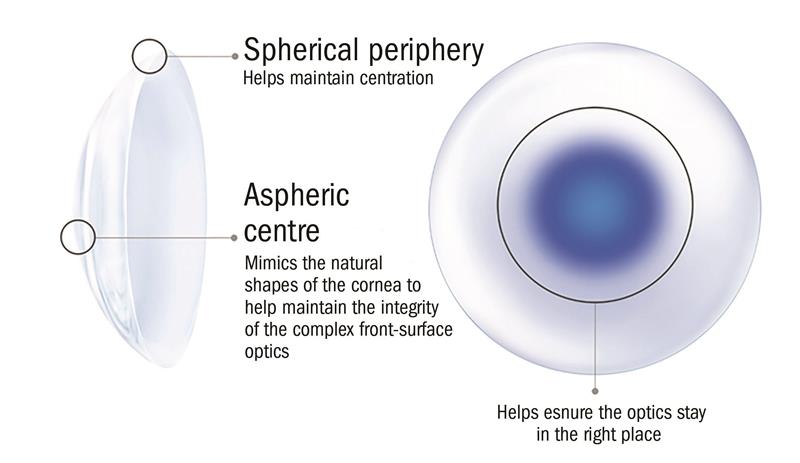 Figure 5: Hybrid back curve designed for optimised centration
Figure 5: Hybrid back curve designed for optimised centration
Hydraclear Plus Technology
Delivering a comfortable experience is crucial for all contact lens wearers. As highlighted earlier, the presbyopic eye is more likely to exhibit changes to tear film quality that could negatively impact both comfort and the visual experience. Choice of CL material to help maximise comfort is of particular importance in this patient group. As part of the Acuvue Oasys range, Acuvue Oasys Multifocal benefits from the same technology and performance, designed to help maintain comfort throughout the day. This means it is made from senofilcon A, which uses Hydraclear Plus Technology to permanently embed into the material a wetting agent that mimics tear film mucins thought to help maintain a stable tear film.21,22
The effect of permanently embedding long chain polyvinyl pyrrolidone (PVP) into the material has been shown experimentally to reduce the amount of higher order aberrations induced on the surface of the lens in between blinks in symptomatic wearers.23 These visual benefits are coupled with a long history of comfort performance. The Acuvue Oasys range has never been beaten in comfort.‡ Using information publicly available on the clinical
trials.gov website, which registers the design and results of clinical trials, in 14 years of clinical trials involving Acuvue Oasys, involving more than 4,000 patients across 29 different trials, the lens has never been beaten in comfort.‡
Clinical performance
As mentioned, the design and range of Acuvue Oasys Multifocal is exactly the same as 1-Day Acuvue Moist Multifocal, a lens which demonstrates strong clinical performance. In a controlled clinical study carried out in 21 sites in the USA, 275 presbyopes were fitted with 1-Day Acuvue Moist Multifocal.24 Across all prescriptions a high percentage of subjects achieved good high contrast acuity: distance ≥6/6 by 86%; intermediate ≥N6 at 65cm by 87% and near ≥N4.5 at 40cm by 79%.24 Equally importantly, eight out of 10 subjects either agreed or strongly agreed that they found their CLs comfortable.24
More recently a study utilising Acuvue Oasys Multifocal, has been carried out with the details set out in table 2.
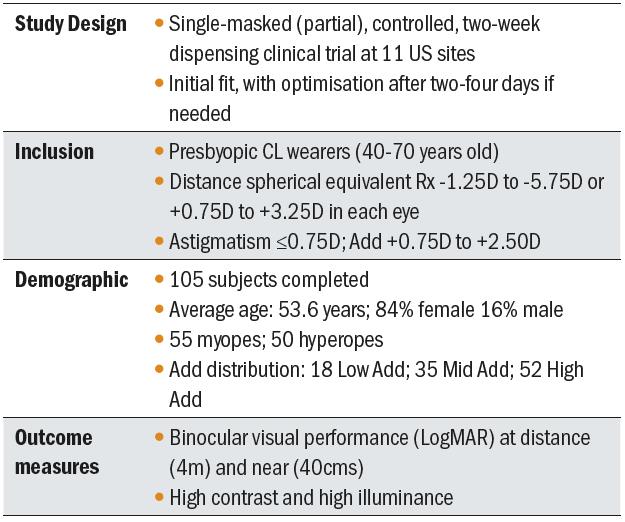 Table 2: Acuvue Oasys Multifocal study details24
Table 2: Acuvue Oasys Multifocal study details24
The visual acuity results obtained after the two-week wear period across the study population were encouraging and supported the notion that the design can lead to continuing successful wear across the refractive and reading addition range. Overall, 84% of the subjects achieved 0.0 logMAR (6/6) acuity or better.25 This is perhaps even more impressive given 52 of the 105 subjects were wearing a high add lens.
Fitting success was comparable to 1-Day Acuvue Moist Multifocal with 97.3% of patients fitted successfully with two pairs of lenses or less, so up to four lenses in total. In short, the Acuvue Multifocal Portfolio with Pupil Optimised Design technology has been shown to provide built-in personalisation for a quick and easy fit.24,25
It is important to consider how successful results like those stated above were achieved. Chair time required to reach a successful outcome for a patient is an important part of the fitting equation. The advice for all multifocal designs is to follow the manufacturer’s fit guide for that particular lens. When this is done for the Pupil Optimised Design technology, and as demonstrated by results for the Acuvue Multifocal Portfolio, ECPs can feel confident in reaching that endpoint in just a few lenses. In fact, using the fit guide led to more than two-thirds of patients being successfully fitted at the first visit and practically all of them using four trial lenses or less.24,25
The fit guide is available in the form of an online calculator Acuvue Calculator (jnjvisioncare.co.uk) to make the trial lens and enhancement process even easier. Simply enter the refraction, patient age and dominant eye details into the system and the most appropriate lenses will be suggested (figure 6).
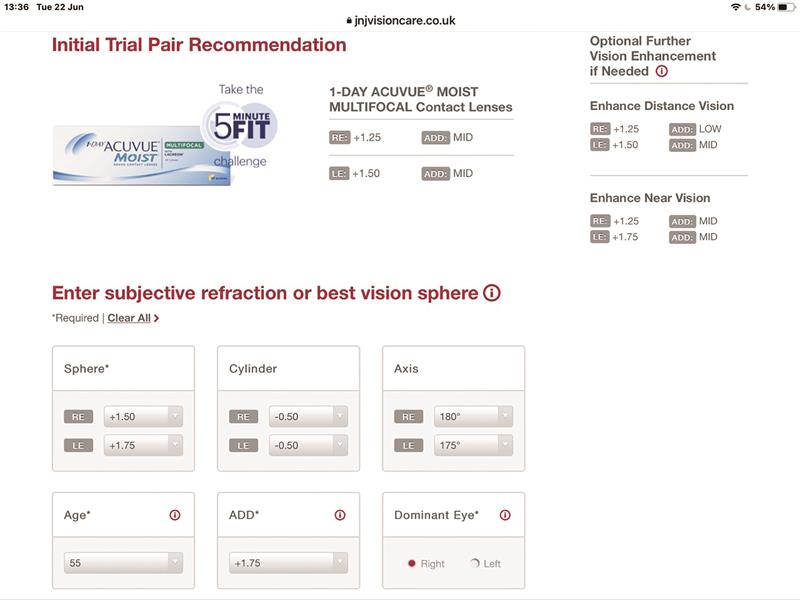 Figure 6: Acuvue Multifocal Fitting Calculator. Patient data is entered as per lower part of image and results are displayed, showing vision enhancement options
Figure 6: Acuvue Multifocal Fitting Calculator. Patient data is entered as per lower part of image and results are displayed, showing vision enhancement options
Fitting for success
The importance of using the fitting guide or Acuvue Multifocal Fitting Calculator cannot be overstated. There are some additional tips that are also relevant to reaching the best possible outcome for each patient. The design of Acuvue Oasys Multifocal deals with the complex optical requirements touched on earlier in this article. That leaves just three simple steps for the ECP to follow (table 3). These three results are then used in the online multifocal calculator, from which initial trial lenses, and enhancements to either distance or near vision can be made.
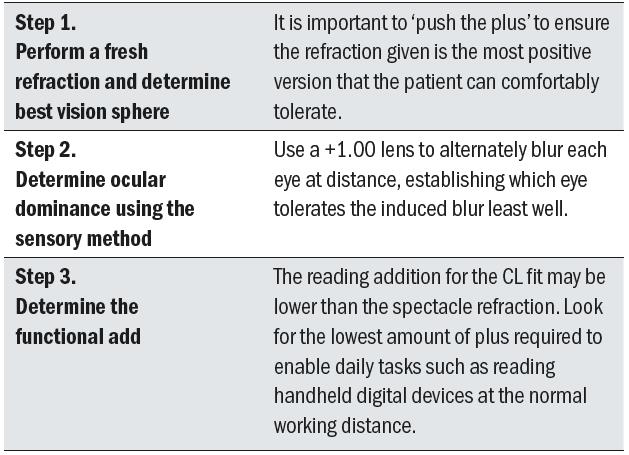 Table 3: Fitting in three simple steps
Table 3: Fitting in three simple steps
For ECPs less confident and comfortable with soft MF fitting, there are a few additional tips to bear in mind. First, start the conversation with presbyopes early. This makes emerging and low presbyopes aware of their options and enables lower adds to be used with the multifocal lenses, which can help with patient adaptation. As already covered, check and prepare the tear film and ocular surface if any pre-existing compromises to their condition are found. Ideally, for those first few fits chosen to build confidence aim to fit eyes with a good quality tear film. Look for near spherical prescriptions too, with no more than 0.75D of astigmatism. This will provide the best chance of achieving good clarity of vision at all distances for the patient.
Expectation setting is important. It is best to have a conversation with the patient upfront on what ‘good’ looks like for them. Ask them to identify two to four tasks they currently cannot do but would like to. When they return for their follow up, start the conversation by asking if they were able to perform the tasks they identified; in most cases this starts the conversation on a positive tone.
Some visual tasks will simply be more comfortable when using reading glasses, typically those requiring small detail. Being aware of that from the outset is helpful for the patient. They will not feel disappointment that their MF SCLs cannot achieve this fine detail, but instead hopefully will be pleased that they can deliver for everything else that they routinely focus on.
Conclusion
The presbyopes in a clinical practice represent an incredible opportunity. Far from having ‘old eyes’ they are actually more active and affluent than ever before. Current CL wearers wish to continue in lenses and represent the first priority for introducing MF SCLs. Those new to spectacles are a great, and likely well motivated, second sector to target. Acuvue Oasys Multifocal has been designed to meet the needs of this generation. Delivering the right optical profile across the pupil, in the right position on the eye, and with the proven comfort performance of Acuvue Oasys. The Acuvue Pupil Optimised Technology is now available in both a daily disposable and a reusable option.
Success in practice comes with being proactive, actively communicating with patients and following the simple steps to determine the correct refraction and using the fit guide or calculator to select the starting prescription.
- David Ruston is Director Global Professional Education and Development for Johnson & Johnson Medical Ltd, Dr Greg Williby is Principal Scientist Global Platform R&D Presbyopia and Dr Kurt Moody is Director North America Professional Education, both for Johnson & Johnson Vision Care, Inc.
Important Safety Information
Acuvue Contact Lenses are indicated for vision correction. As with any contact lens, eye problems, including corneal ulcers, can develop. Some wearers may experience mild irritation, itching or discomfort. Contact lenses should not be used in case of eye infections or any other eye conditions. For complete information, including contraindications and precautions, please consult the instructions for use or visit the J&J website www.jnjvisioncare.co.uk.
All Acuvue Brand Contact Lenses have Class 1 or Class 2 UV Blocking to help provide protection against transmission of harmful UV radiation to the cornea and into the eye. UV absorbing contact lenses are NOT substitutes for protective UV absorbing eyewear such as UV absorbing goggles or sunglasses because they do not completely cover the eye and surrounding area. UV transmission measured with -1.00D lens
References
- Fry R. Gen X the only generation to rebound from Great Recession in wealth. Pew Research Centre – Fact tank July 2018. Sourced at https://pewrsr.ch/2uyIgSz
- Pew Research Centre. Demographics of Mobile Device Ownership and Adoption in the United States. Pew Research Centre: Internet, Science & Tech June 2019.
- JJV Data on File 2020. Survey conducted with representative United States (n=1,000) and United Kingdom (n=1,000) consumers, ages 12-64.
- JJV Data on File 2018. Growth Levers analysis based on IPSOS Global Incidence Tracker, retail outlet consumption data and national census population data covering the United States, United Kingdom, Russia, Japan, South Korea, and China.
- JJV Data on File 2020. Acuvue® Pupil Optimised Design Technology. JJV Contact Lenses, Design Features, and Associated Benefits.
- Population Reference Bureau. World Population Data Sheet 2020. Average life expectancy in industrial and developing countries for those born in 2020, by gender. [Available at: https://www.statista.com/statistics/274507/life-expectancy-in-industrial-and-developing-countries/. Accessed: 16 Jan 2021]
- Hausenblas H. Do Reading Glasses Make You Look Older? US News & World Report June 2015. In.
- Honigman R, Castle DJ. Aging and cosmetic enhancement. Clin Interv Aging 2006;1:115-9.
- Patel S, Boyd KE, Burns J. Age, stability of the precorneal tear film and the refractive index of tears. Contact lens & anterior eye 2000;23:44-7.
- du Toit R, Situ P, Simpson T, et al. The effects of six months of contact lens wear on the tear film, ocular surfaces, and symptoms of presbyopes. Optometry and vision science 2001;78:455-62.
- Dumbleton K, Caffery B, Dogru M, et al. The TFOS International Workshop on Contact Lens Discomfort: Report of the Subcommittee on Epidemiology. Investigative ophthalmology & visual science 2013;54:TFOS20-36.
- Wolffsohn JS, Arita R, Chalmers R, et al. TFOS DEWS II Diagnostic Methodology report. The ocular surface 2017;15:539-74.
- Chalmers RL, Keay L, Hickson-Curran SB, et al. Cutoff score and responsiveness of the 8-item Contact Lens Dry Eye Questionnaire (CLDEQ-8) in a Large daily disposable contact lens registry. Contact lens & anterior eye 2016;39:342-52.
- Tichenor AA, Cox SM, Ziemanski JF, et al. Effect of the Bruder moist heat eye compress on contact lens discomfort in contact lens wearers: An open-label randomized clinical trial. Contact lens & anterior eye 2019;42:625-32.
- Siddireddy JS, Tan J, Vijay AK, et al. The Effect of Microblepharon Exfoliation on Clinical Correlates of Contact Lens Discomfort. Optometry and vision science 2019;96:187-99.
- Siddireddy JS, Vijay AK, Tan J, et al. Effect of Eyelid Treatments on Bacterial Load and Lipase Activity in Relation to Contact Lens Discomfort. Eye & contact lens 2019.
- Pucker AD, McGwin G, Jr, Franklin QX, et al. Evaluation of Systane Complete for the Treatment of Contact Lens Discomfort. Contact lens & anterior eye 2020;43:441-7.
- Blackie CA, Coleman CA, Nichols KK, et al. A single vectored thermal pulsation treatment for meibomian gland dysfunction increases mean comfortable contact lens wearing time by approximately 4 hours per day. Clinical ophthalmology (Auckland, NZ) 2018;12:169-83.
- Papadatou E, Del Águila-Carrasco AJ, Esteve-Taboada JJ, et al. Objective assessment of the effect of pupil size upon the power distribution of multifocal contact lenses. International journal of ophthalmology 2017;10:103-8.
- Guillon M, Dumbleton K, Theodoratos P, et al. The Effects of Age, Refractive Status, and Luminance on Pupil Size. Optometry and vision science 2016;93:1093-100.
- JJV Data on File 2018. Similarities between Mucin and Poly(N-Vinyl Pyrrolidone) (PVP).
- JJV Data on File 2017. A 4-week randomized, masked, controlled, cross-over, dispensing daily wear study with Acuvue Oasys vs. Ultra; n=127 subjects who spent greater than or equal to 8 hours per day using digital devices during the study
